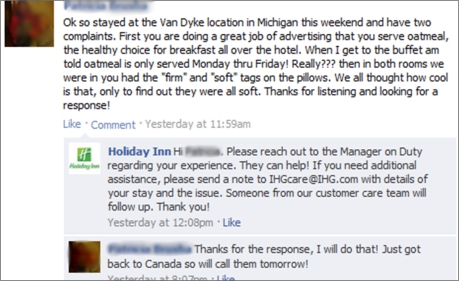By Todd Bacile | May 31, 2012
One of the first things business people ask me when I tell them that I teach electronic marketing and social media marketing within Florida State University’s College of Business is “How can I market my company on Twitter?” A lot of business people understand the benefits of marketing on Facebook, yet Twitter remains an enigma. In fact, many companies fail to use appropriate marketing strategy for this particular medium. A great example of this is a series of actual tweets that recently appeared in my timeline. Based on these tweets, the following is a very simple case in point of what marketers should NOT do on Twitter.
As an example please view the screen shot below (note: I have attempted to let this company maintain some of its dignity by blurring / redacting its name). If you read the content of each tweet and notice the time between posts you see an unspectacular pattern forming. The funny thing is that I have done business with this firm before and they are very knowledgeable with marketing concepts in some emerging technologies. Apparently their breadth of knowledge does not encompass Twitter.
The screen shot depicts tweet after tweet using the same core message with minor edits to verbiage, but virtually the same offer. It appears that once per hour the company posts a nearly identical form tweet – and that is something that firms should NOT do when marketing their products on Twitter. Perhaps even worse is that the company is trumpeting its terrific offer. Consumers on Twitter – and most social media sites – do not want to be “marketed to” or “shouted at” regarding a firm’s latest and greatest sale. Why? It’s annoying. Even though consumers have learned to accept annoying promotional communication within mass media, consumers prefer to avoid annoying marketing communication when they are reading and exchanging content within their social networks. It should come as no surprise that the company depicted in this screen shot has a following-to-follower ratio of about 5-to-1. This is not a recipe for success to build a supportive and engaging following for your brand on Twitter.
If you want a basic Twitter 101 on what should be done to correct this issue, one can follow the advice offered by Joel Comm in his book Twitter Power. It’s acceptable to mix in tweets containing promotional offers, yet this should not be the majority of tweets sent. Instead, a firm should mix its tweet style using classic tweets (this is what I am doing), opinion tweets (this is what I am thinking), accomplished tweets (this is what I’ve done), entertainment tweets (I’m going to make you laugh), and question tweets (can you help me with something?). Furthermore, these five different tweet styles can be mixed-in with four common types of corporate brand tweets: company or industry news, feedback, special offers, and support. A company can create various tweets using combinations of these different styles and types. Then, a brand can occasionally mix in a sales pitch. A company using a Twitter strategy such as this will minimize the annoyance factor, appear more interesting, and improve its chances to engage with other consumers while building a large following.
Todd Bacile is a marketing doctoral candidate and instructor for Electronic Marketing and Services Marketing in the College of Business at Florida State University. He has published and presented numerous marketing studies in the areas of social media, mobile marketing, and services marketing at national and regional marketing conferences. When not working, he loves to cook BBQ on his smoker and always enjoys a good baseball trivia question. You can contact him on Twitter @toddbacile





